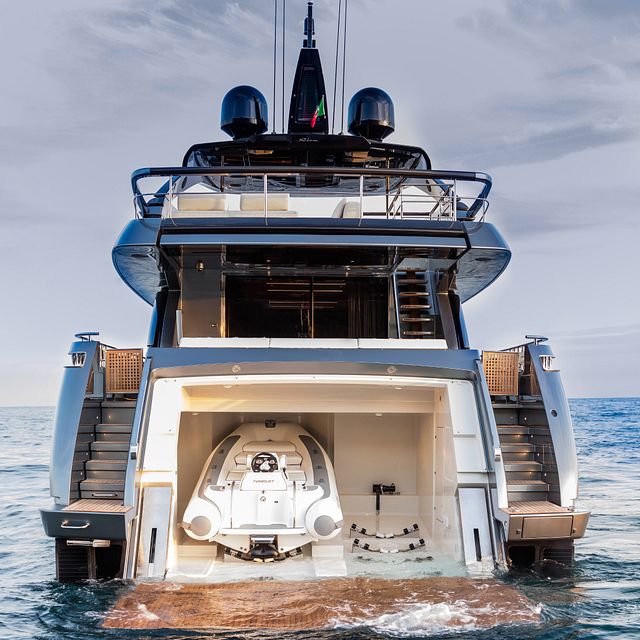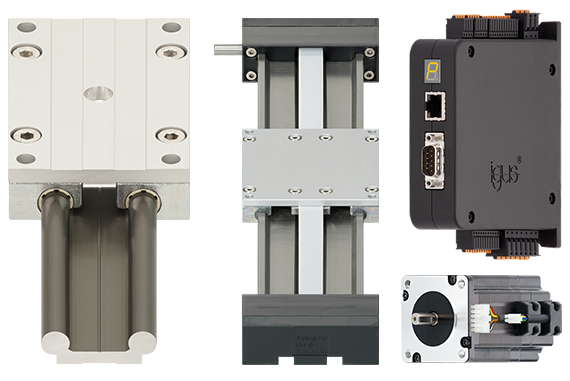Which Shaft Material is Best for My Application?
Common shaft materials
Hard-anodized aluminum (6061-T6)

Centerless-ground, hard-anodized aluminum has been the default shafting material used with linear plain bearings for decades. Many of its features go hand-in-hand with the main benefits of plain bearings—it is lightweight, non-magnetic, easy to machine, and corrosion-resistant in many environments. This also offers a serious cost benefit when compared to stainless steel, especially within applications that involve salt-spraying, or those that may need to resist wash-down.
It’s important to note that most aluminum shafting is stocked in six to twelve foot lengths, which are then cut down to shorter lengths based upon the order. This means that the saw-cut ends will no longer be anodized, consequently bringing raw aluminum into the picture.
300-series stainless steel

The 300-series family of stainless steel is the best option for corrosion resistance, outperforming hard-anodized aluminum, chrome-plated carbon steel, and 400-series stainless steels that many suppliers offer. 316 stainless steel is the absolute best solution, and is often the go-to choice in the marine industry for that reason.
It’s important to keep in mind that 300-series steel cannot be hardened, and therefore is not suitable for recirculating ball bearings — only plain bearings.
400-series stainless steel

This family, especially the 420C or 440C set, is necessary for recirculating ball bearings due to the 50RC+ surface hardness which is necessary for resisting the high point-to-point pressure of ball bearings.
400-series stainless can prove challenging for applications requiring snap-ring grooves or tapped holes, as many machine shops will no-quote or add additional charges for special tooling to work with the hardened surface.
Compared to 300-series stainless steel, 400-series is more cost-effective and is less deflective for unsupported, high load applications. However, 400-series steel is more prone to corrosion.
Chrome-plated carbon steel

Chrome-plated 1060 or 1055 shafting is not as commonly used in North America as it is in Europe, but is available as a moderately corrosion-resistant material for chemical wash-downs while at a lower price than even the 400-series stainless.
The primary reason why some customers may choose a chrome-plated shaft is because it has a highly polished and shiny surface, whereas stainless steel products can sometimes have a more matte, or even dull, finish. Since chrome-plated carbon steel is hardened to RC60 and above, it can be used for ball bearings as well.
Hardened carbon steel
The workhorse of the linear bearing industry, especially for ball bearings, this shafting is hardened to RC60 and above and is a mainstay for linear ball bearings; however, it is not always as advantageous when it comes to self-lubricating plain bearings, where aluminum shafting or stainless steel shafting dominates.
Since plastic linear plain bearings do not require oil, the steel will effectively corrode over time if not under perfect conditions, which makes ball bearings a better match because they do require maintenance and scheduled oiling.
Carbon fiber

Carbon fiber is a very uncommon linear shaft material, yet it is available—at least from igus®. Most applications that use carbon fiber shafting either involve a non-magnetic material (often in medical imaging machinery), or something that requires ultra-low weight and strength.
Another thing to consider is that the price for carbon fiber is very high in contrast to the other materials above—about five times the cost of aluminum and one and a half times the cost of 316 stainless steel
Considerations when choosing shaft material
Cost
Cost is one of the biggest factors to consider when choosing a shaft material. As previously mentioned, materials like hard-anodized aluminum and chrome-plated carbon steel are some of the most affordable, while carbon fiber is the most expensive by a large margin.
Wear rate
Knowing the wear rate of your shaft material will help establish a more accurate maintenance schedule and avoid unplanned downtime and system failure. The shaft material itself, including the roughness and hardness, application conditions, and choice of bearing will all have an impact on the overall wear of the system.
Particle damage
Application environments with dirt and dust can lead to increased shaft wear and eventual damage if particles get between the bearing and shaft. This is especially a concern with bearings that utilize grease for lubrication, as particles will adhere to the grease and be more likely to enter the system.
Corrosion
Corrosion is one of the leading causes of failure for bearings. Corrosion of a shaft causes surface roughness to increase, and small particles may begin to flake off of the shaft, causing abrasion and increased wear. This can be best avoided with the proper surface finish — anodized aluminum or 300-series stainless steel, for example.
Thermal properties
If your application is in an environment with extreme temperatures, the thermal properties of a shaft are going to be essential to understand. As temperature increases, a shaft can expand (thermal expansion). While this growth is often mere millimeters, misalignment will still occur and lead to increased strain and wear.
Further reading: Shaft considerations for bearing applications
Bearings will perform differently on different shaft materials, so having a proper knowledge of which shaft material will work best with a particular bearing is essential to ensuring the most efficient operation possible for your application.



